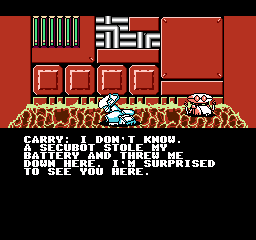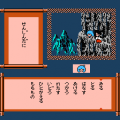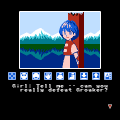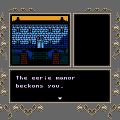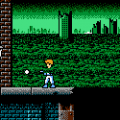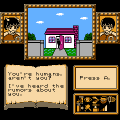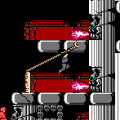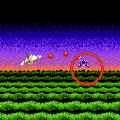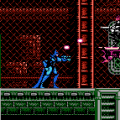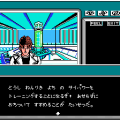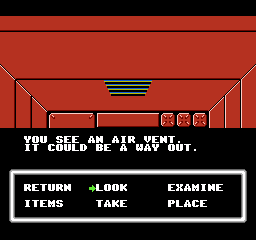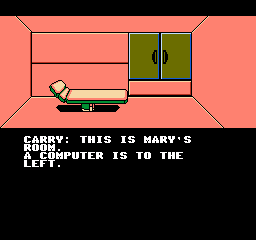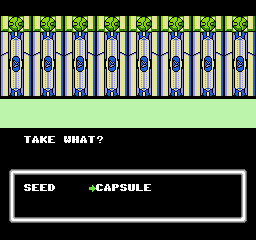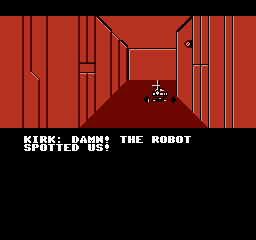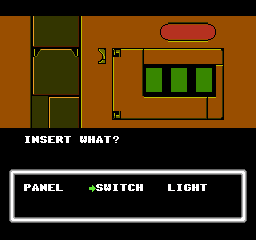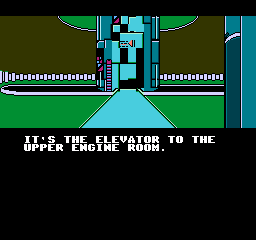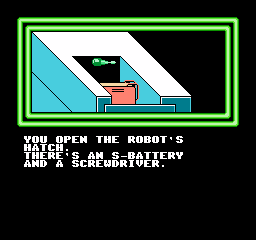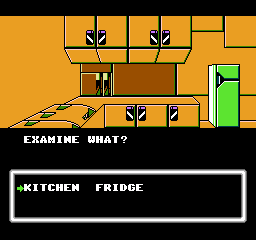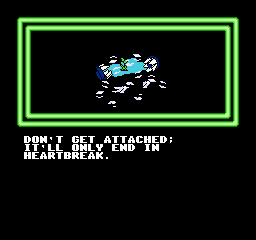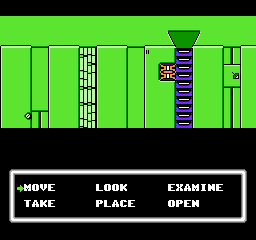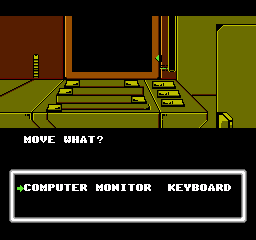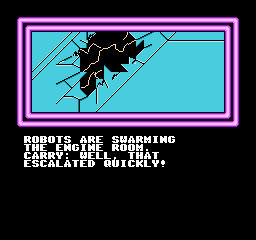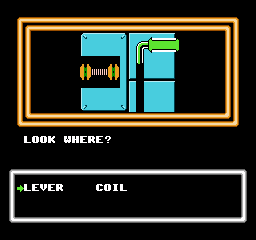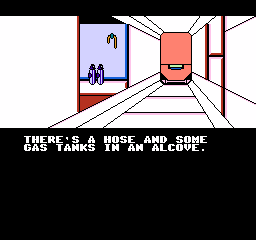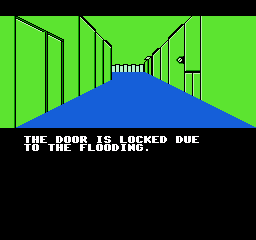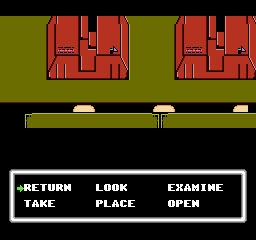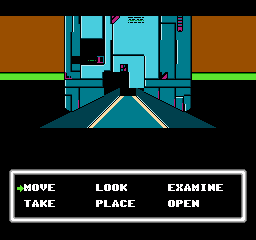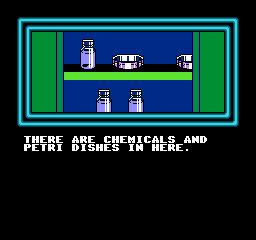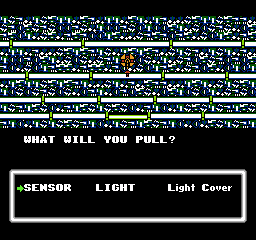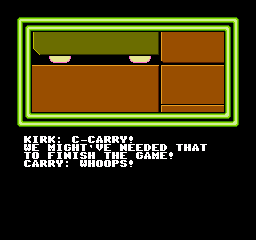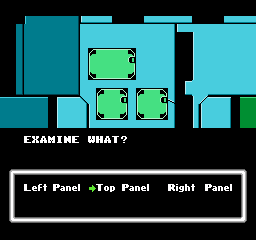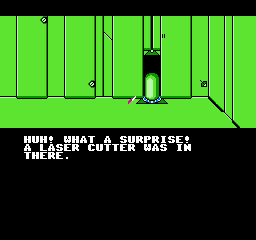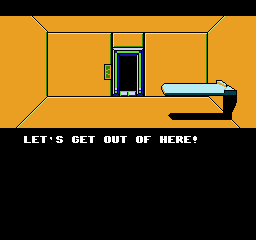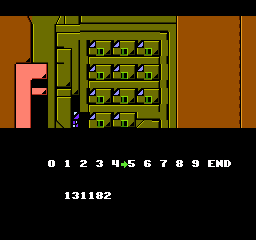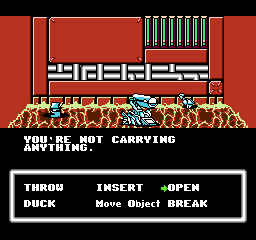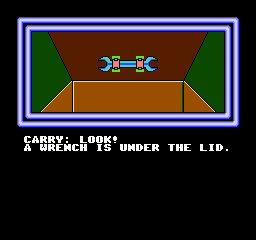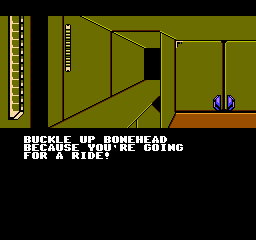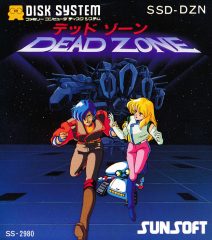
Famicom Cover
After cutting their teeth on console ports of arcade games like Arabian and Route-16: Turbo, Sunsoft began creating original titles for the Famicom and its then-new Disk System add-on. Among these was Dead Zone, their first adventure game and one of the earlier examples of the genre following the Famicom port of the influential Portopia Serial Murder Case. The result is a decent sci-fi adventure that’s worth a look for what it tries to do, though it can be cumbersome.
In the distant future, mankind has reached the stars and developed countless space colonies to combat overpopulation issues. A talented engineer named Kirk is heading to the new colony “Lionex”, where his fiancé Mary has been working as chief engineer for the past five months. When he arrives with his robot companion Carry, they find the place to be completely empty, before they’re suddenly attacked and tossed into a garbage disposal facility. They’ll have to escape and explore the colony, figure out what’s happened and hopefully rescue Mary.
Dead Zone is an adventure game in which you must solve navigational and inventory-based puzzles to progress to the next area. You utilize a command menu which presents various ways of observing and interacting with the environment, such as moving around, examining noteworthy parts of a room, using and taking items, and more. There are also context sensitive actions that appear depending on where you are, hinting at what you’ll need to do in that specific area.
If you’re still stuck, you can ask Carry for hints, and you can save the game at any point. However, saving resets your progress to the start of that area, potentially forcing you to repeat yourself. This won’t take too long once you know what you’re doing, but it’s an odd design choice that drags things out. This also applies to other parts of the interface such as not being able to exit out of an incorrectly chosen action, or having to cycle through the list of actions by pressing the B button.
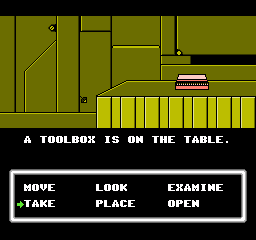
That said, these minor annoyances manage to compliment the game’s slow-paced nature, because you’ll often have to stop and closely examine each part of a given area before you know what must be done. This is due to the many actions you can perform, as well as a curious mechanic that occasionally crops up in which a room can be looked at from multiple angles. Even in the first room, you’ll be facing one end of a room and will have to turn to the other ends to find what you need.
It takes a while to get used to this, but it creates more dense locations to investigate. This is especially just as well since each area of the game only consists of a handful of rooms, and you can’t backtrack to previous areas. Items also don’t carry over, resulting in a somewhat brisk adventure where you only need to focus on moving forward.
Most areas utilize the same structure of figuring out how to move forward, though there’s some variety offered. One section requires you perform a very specific sequence of actions to make it through, giving you a game over if you mess up but allowing you to start over. Another throws a sudden arcade sequence at you, a riff on the bonus stage from Ikki where an old man tosses rice balls that you must catch to move on. This latter sequence is simple enough since you can memorize where the balls are being thrown, but it’s rather annoying and comes out of nowhere.
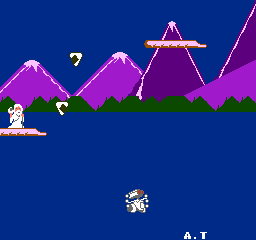
Progression can also be stopped by the usual adventure game challenge of not performing the right action on a particular object or item, which is more difficult here owing to how many actions you can work with. Even though the puzzles are often intuitive, it’s easy to get stuck simply by not knowing the right verb the game wants in that specific moment, and said verb can mean different things depending on the context. If you take notes and make sure to examine and look at every object at least twice, it can be relatively easy to figure out what you need to do.
Despite the above plot synopsis, there isn’t much focus on storytelling and characterization for most of the game. You’re here to solve puzzles, with only the occasional snippet of conversation between Kirk and Carry breaking things up. That changes with the game’s climax, which strips out most of the mechanics for a series of cutscenes and some brief puzzles. It’s an unusual but compelling finale that adds some pathos, and a precursor to the heavier narrative emphasis found in Sunsoft’s later adventure game Ripple Island.
The graphics do a solid enough job at conveying its setting, using straight angles and subtle white sheens across block-colored objects to create unnaturally clean sci-fi environments. The lifelessness of the rooms, along with the complete lack of music apart from a handful of brief cues by Naoki Kodaka, manages to give off the impression of an eerily empty place.
The most memorable part of the sound design comes from the use of digitized voice clips, reminiscent of Sunsoft’s earlier Stratovox. This mostly occurs when you ask Carry, who greets you with a cheerful “Carry-desu!”, but you also get a greeting when you start the game and a handful of voice clips play at its climax. Like other games of the day, the voice synthesis technology was licensed from American physicist Forrest S. Mozer, who had invented and patented the tech in the early 70s.
Sunsoft games have a habit of referencing each other, and Dead Zone is no exception. As well as the Ikki arcade sequence, the Lionex space colony seems to be named after the unreleased game for the Nintendo VS. System. You can also find a phone that calls the Sunsoft hotline and a copy of the somewhat notorious Atlantis no Nazo (which shares some development staff with this game). Kirk proclaims his love for the game and you can even pick it up, but you’re not allowed to throw it away or you’ll be cursed!
Kirk and Carry would cameo in future Sunsoft games in various capacities, such as hosts in the “Magazine Disk” game collection Nazoler Land Dai 3 Gou, and playable characters in the Famicom-only Barcode Battler spin-off Barcode World.
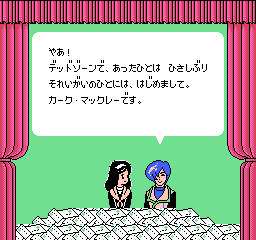
Kirk in Nazoler Land Dai 3 Gou (right)
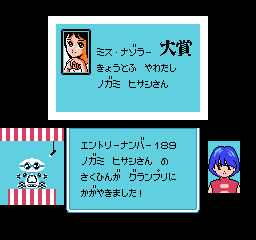
Carry in Nazoler Land Dai 3 Gou (bottom left)
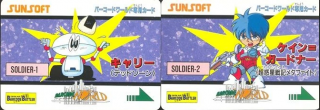
Carry and Kirk cards for Barcode World
Dead Zone received a manga adaptation written and drawn by Susumu Kobayashi for volume 16 of Tokuma Shoten’s Wanpakku Comics, a series of books that also served as strategy guides for their respective games.
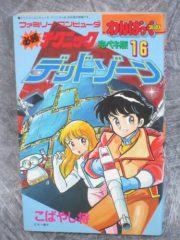
Dead Zone manga (tankoban cover)
Kenji “Moriken” Mori, a Sunsoft artist who had designed Carry, went on to release a handful of doujin adventure and action games based on Sunsoft projects he worked on via his M’s Cafe label. He released a direct sequel to Dead Zone called “デッド ゾーン+” or “Dead Zone PLUS”. It’s a very obscure title, and going by its promotional screenshots, it has a scantily dressed maid and a scene where you can look up Mary’s skirt.
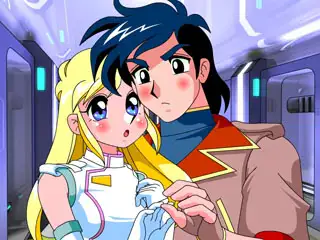
Dead Zone PLUS
To ensure this article ends on a happier note, Sunsoft did a handful of other adventure games such as the charming Ripple Island and Nankin no Adventure (なんきんのアドベンチア). Dead Zone received a fan translation in 2019 thanks to Stardust Crusaders, which even includes a translation of the story and background so you can get a better understanding of the game’s world.
LINKS:
The English fan translation patch: https://www.romhacking.net/translations/5154/
Kenji Mori’s old website where he briefly talks about working on Dead Zone, along with other Sunsoft games: http://web.archive.org/web/20150620013143/http://moriken.kalin.to/about/about.htm
A place to look at and purchase Mori’s doujin Sunsoft games, including Dead Zone PLUS: https://www.dlsite.com/home/circle/profile/=/maker_id/RG10739.html/?locale=en_US
Dead Zone manga pages were taken from this eBay listing: https://www.ebay.com/itm/364197216724?chn=ps&mkevt=1&mkcid=28
Special thanks to ultraTimPrime for helping me find info for the Dead Zone manga.
Extra information, such as the Ikki connection and the voice synthesis tech, is sourced from The History of Sunsoft Volume 1 by Stefan Gancer.
